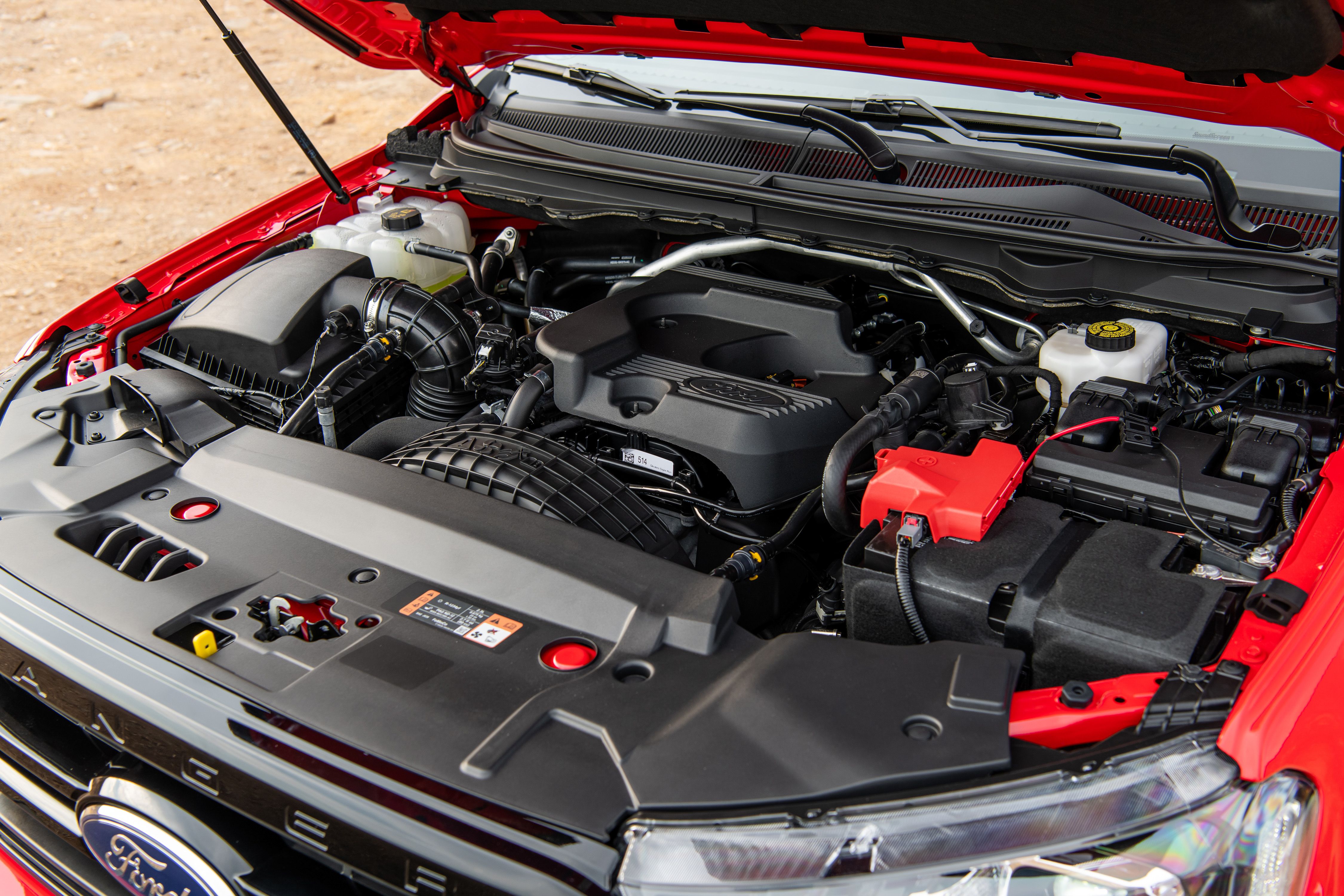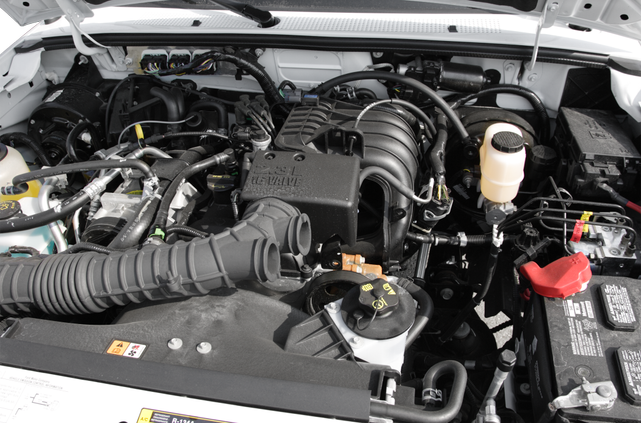Everything You Need to Know About the 2.2 Ford Ranger Engine and Its Performance
Understanding the Fundamentals of Cars And Truck Engines: Attributes, features, and kinds

Introduction of Vehicle Engines
An auto engine functions as the heart of a vehicle, transforming gas into mechanical energy to thrust it forward. This elaborate system consists of various components that work in unison to ensure optimal performance and effectiveness. The fundamental procedure of an automobile engine includes the interior combustion process, wherein fuel and air are combined, ignited, and expelled to develop power.
The engine's style can dramatically impact its efficiency, gas efficiency, and exhausts. Trick components include the cyndrical tube block, pistons, crankshaft, and camshaft, each playing a vital duty in the engine's general feature. The cyndrical tube block houses the cyndrical tubes where combustion occurs, while the pistons transform the eruptive power from combustion into linear movement. This activity is after that transformed into rotational energy by the crankshaft, allowing the automobile's wheels to turn.
Along with these parts, engines frequently use numerous systems such as gas injection, ignition, and cooling down systems to boost efficiency and long life. Recognizing the standard auto mechanics of automobile engines is necessary for detecting concerns and executing maintenance, eventually adding to the car's reliability and efficiency in time.

Sorts Of Auto Engines
Auto engines can be classified into several types based on their style, fuel type, and functional concepts. 2.2 ford ranger engine. The most common classifications include interior burning engines (ICE), electric engines, and crossbreed engines
Inner combustion engines, which can be additional divided into fuel and diesel engines, operate by stiring up a fuel-air mixture to produce power. Gas engines are normally lighter and smoother, while diesel motor are extra fuel-efficient and deal better torque.
Electric engines utilize electric power kept in batteries to power an electrical motor, providing instantaneous torque and absolutely no discharges throughout operation. As technology breakthroughs, electric automobiles (EVs) are increasingly becoming preferred for their ecological advantages and reduced running costs.
Hybrid engines incorporate components of both interior combustion and electric engines, permitting flexible source of power and improved gas performance. They can operate in various settings, making use of either the fuel engine, the electrical motor, or both all at once.
Each kind of engine has unique advantages and drawbacks, influencing their application in different car kinds and market sections, from compact automobiles to heavy-duty trucks. Comprehending these kinds is essential for making educated decisions relating to vehicle option and efficiency expectations.
Engine Functions Discussed
Comprehending engine features is essential for grasping exactly how vehicles operate successfully. At the core of any internal combustion engine exists the essential procedure of transforming gas into mechanical energy.
The ignition takes place following, igniting the combination and creating a fast growth of gases. This pressure drives the piston down throughout the power stroke, which ultimately translates into the rotational motion of the crankshaft. The exhaust stroke after that expels the spent gases from the chamber, making method for a brand-new cycle to begin.
Along with these main functions, engines likewise integrate systems that take care of air conditioning and lubrication, guaranteeing optimum functional temperature levels and reducing friction between moving parts. This elaborate interaction of features makes it possible for the engine to generate the power necessary for vehicle propulsion while maintaining efficiency and integrity. Recognizing these features supplies useful insight into the complexities of automotive design and improves the capability to diagnose and address engine-related concerns effectively.
Key Engine Features
Engine design incorporates numerous crucial functions that dramatically affect effectiveness, sturdiness, and performance. One of one of the most critical facets is the engine setup, which includes the original source inline, V-type, and level styles. Each arrangement impacts the engine's size, power, and equilibrium outcome, thereby influencing overall lorry dynamics.
An additional crucial function is the engine variation, referring to the overall quantity of all cylinders. Bigger displacements commonly generate even more power yet may jeopardize gas efficiency. Engine materials likewise play an essential function; high-strength and lightweight materials, such as light weight aluminum and magnesium alloys, enhance performance without including too much weight.
The sort of gas shot system used-- such as multi-port or straight shot-- influences burning performance and emissions. Turbo charging and turbocharging are attributes that boost engine performance forcibly extra air right into the burning chamber, raising power output without substantially boosting engine dimension.
Last but not least, the visibility of advanced engine management systems optimizes fuel-air mixture and ignition timing, adding to smoother operation and better fuel economic situation. Jointly, these attributes specify an engine's capacities, establishing the structure for its performance and long life in an affordable auto landscape.
Upkeep Tips for Engines
Appropriate engine maintenance is critical for ensuring optimal performance and long life, as ignoring regular care can lead to substantial issues down the line. To keep your engine successfully, start with regular oil changes, typically every 3,000 to 7,500 miles, depending on the sort of oil made use of. Fresh oil lubricates engine components, reducing rubbing and wear.
Furthermore, keeping an eye on coolant levels is important to avoid getting too hot. Make certain that the coolant is topped up and is in excellent condition to maintain reliable temperature level law. Consistently inspect and change air and gas filters, as blocked filters can prevent airflow and fuel distribution, compromising engine effectiveness.
Furthermore, take notice of stimulate plugs and ignition systems. Malfunctioning or used spark plugs can bring about misfiring and lowered performance. Examining the battery terminals and connections for corrosion is also vital, as a weak battery can impact engine beginning.

Final Thought
In summary, a useful source detailed understanding of car engines encompasses different types, features, and essential features that considerably influence automobile efficiency. Internal combustion engines, along with electrical and hybrid choices, demonstrate diverse systems for energy conversion. 2.2 ford ranger engine. Identifying the essential functions, such as consumption and exhaust cycles, along with vital engine attributes like setup and fuel injection systems, outfits auto owners with the understanding needed for effective maintenance and procedure, inevitably improving automobile longevity and performance
A car engine serves as the heart useful content of an automobile, converting fuel into mechanical energy to move it forward. The essential procedure of a car engine includes the interior burning process, where gas and air are mixed, sparked, and removed to create power.
Consistently examine and replace air and gas filters, as clogged filters can prevent air movement and gas shipment, endangering engine effectiveness. - 2.2 ford ranger engine
In recap, an extensive understanding of auto engines includes various kinds, features, and key functions that substantially influence lorry efficiency. Identifying the essential functions, such as consumption and exhaust cycles, alongside important engine attributes like setup and gas shot systems, outfits auto owners with the knowledge essential for reliable maintenance and procedure, ultimately boosting automobile long life and efficiency.